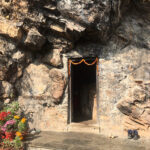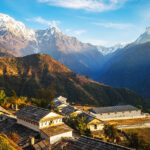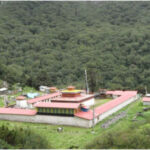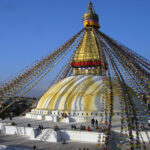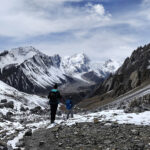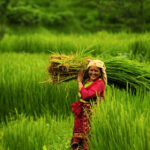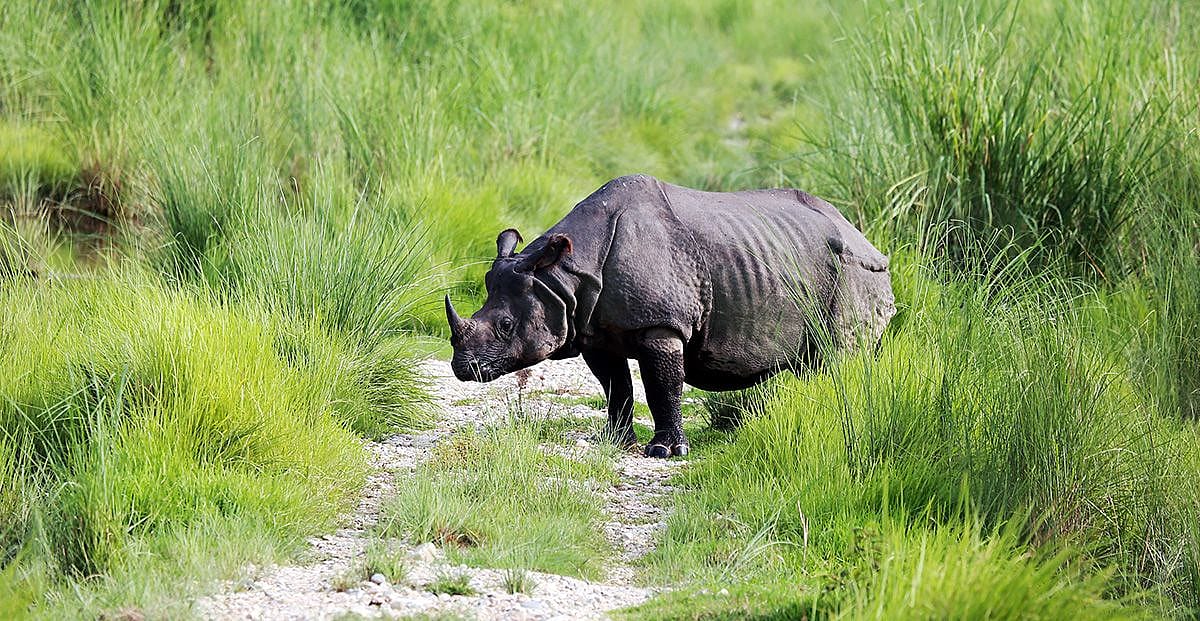
Chitwan National Park
Established in 1973, Chitwan National Park is Nepal’s first and most renowned national park, covering 932 square kilometers of lush lowland Terai jungle. Recognized as a UNESCO World Heritage Site in 1984, the park is located in south-central Nepal and is a haven for biodiversity. The name “Chitwan” means “Heart of the Jungle,” and the park lives up to this title with its dense sal forests, wide grasslands, and winding rivers. It offers an exceptional wildlife experience and cultural interaction with the Tharu community. Chitwan has transformed from a former royal hunting reserve to a leading conservation success story and ecotourism destination.
Wildlife of Chitwan: Rhinos, Tigers, Elephants, and More
Chitwan National Park hosts an extraordinary variety of wildlife, making it one of Asia’s premier destinations for jungle safaris. Visitors often spot the endangered one-horned rhinoceros, sloth bears, leopards, and the elusive Bengal tiger. The park is also home to wild elephants, crocodiles, striped hyenas, and four types of deer including the elegant sambar. Freshwater dolphins and various reptiles thrive in its rivers, adding to the park’s diverse fauna. A visit to Chitwan promises thrilling wildlife encounters in a truly wild and natural setting.
Birdwatching in Chitwan: A Haven for Ornithologists
Chitwan is a birdwatcher’s paradise, with over 560 species recorded within its boundaries. The park’s diverse habitats—rivers, wetlands, forests, and grasslands—make it ideal for spotting both resident and migratory birds. Notable species include the great hornbill, Bengal florican, and various types of kingfishers, herons, and storks. The best time for birdwatching is between October and March when migratory species join native flocks. Guided tours are available to help enthusiasts identify and appreciate this rich avian diversity.
Rare and Endangered Species of Chitwan
Chitwan National Park plays a crucial role in the conservation of rare and endangered species. It is home to the greater one-horned rhinoceros and the Bengal tiger—two of Asia’s most iconic and threatened mammals. Other rare inhabitants include the gharial crocodile, four-horned antelope, pangolin, and golden monitor lizard. Endangered bird species such as the Bengal florican and lesser adjutant stork also reside here. Due to consistent anti-poaching efforts and habitat management, the park is recognized internationally as a conservation success story.
Jeep Safari in Chitwan: What to Expect
A jeep safari in Chitwan National Park is one of the most popular and exciting ways to experience its incredible biodiversity. Lasting between 4 to 10 hours, the safari takes visitors deep into the jungle, across rivers, and into open grasslands. Open-top jeeps allow for unobstructed views of wildlife, and trained naturalists help spot and interpret animal behavior. Early morning or late afternoon safaris offer the best chances to see rhinos, wild boars, deer, and even tigers. Stops at watchtowers and riverbanks also provide prime birdwatching opportunities. It’s an adventure suitable for all ages and an absolute must-do.
Walking Safari: A Close-Up Jungle Adventure
For a truly immersive experience, Chitwan offers guided walking safaris led by experienced trackers. These excursions allow guests to explore the park on foot, getting close to the forest’s sights, sounds, and scents. Walking through animal trails, visitors learn to identify tracks, spot birds, and understand jungle ecology. Although wild animal sightings are less guaranteed than on jeep safaris, the intimacy and thrill of exploring the jungle quietly on foot are unmatched. Safety is always prioritized with two guides accompanying each group.
Canoe Safari on the Rapti River
A canoe safari on the serene Rapti River is a peaceful and scenic way to witness Chitwan’s aquatic life. Hand-carved wooden canoes glide gently along the river, offering views of gharials, marsh mugger crocodiles, and river otters. Birds like kingfishers, egrets, and cormorants are often seen along the banks. Canoe trips typically last about 45 minutes to an hour and are often paired with jungle walks or village tours for a fuller experience.
Tiger & Rhino Tracking Tours in Chitwan
For thrill-seekers and wildlife lovers, tiger and rhino tracking tours offer a deeper dive into the heart of Chitwan. These specialized tours are led by expert guides who take visitors into known habitats using animal tracks, scents, and sounds to locate the park’s star species. While Bengal tigers are elusive and sightings are rare, one-horned rhinos are more commonly encountered in grasslands and near water sources. These tours not only offer the excitement of potential sightings but also educate participants on conservation efforts and animal behavior.
Elephant Breeding Center Tour
A visit to the Elephant Breeding Center in Sauraha provides fascinating insights into the life and conservation of Asian elephants. Established to increase the dwindling elephant population, the center houses elephants of all ages—from newborn calves to elderly mothers. Visitors can observe feeding sessions and learn about elephant health, behavior, and the challenges they face in the wild. Educational displays and interaction with caretakers make this an enriching experience for all ages, while also raising awareness about ethical tourism and elephant conservation in Nepal.
How to Reach Chitwan National Park
Travelers can reach Chitwan National Park from Kathmandu or Pokhara via tourist buses that head to Sauraha, the main access point to the park. The journey typically takes 5–6 hours by road. For quicker travel, daily domestic flights are available from Kathmandu to Bharatpur Airport, located about 25 minutes away. From the airport, taxis or hotel transfers can bring you directly to your accommodation in Sauraha or nearby villages.
Best Time to Visit Chitwan
The ideal time to visit Chitwan is from October to March, when the weather is dry and pleasant, and wildlife is easier to spot. This period is also best for birdwatching due to the arrival of migratory species. The monsoon season (June to September) brings lush greenery but heavy rains can disrupt travel and safaris. From January to March, tall grasses are cut, improving visibility of large animals like rhinos and deer.
What to Pack for Your Jungle Adventure
For a comfortable and safe jungle experience in Chitwan, pack lightweight, neutral-colored clothing to blend with nature and stay cool. Long sleeves and pants are useful for sun and insect protection. Sturdy walking shoes, a wide-brimmed hat, sunscreen, and insect repellent are essential. Don’t forget binoculars for birdwatching and a camera with a zoom lens for wildlife photography. A reusable water bottle and a light jacket for cooler mornings are also recommended.
Sustainable Tourism in Chitwan
Chitwan National Park promotes sustainable tourism by balancing environmental conservation with community engagement. Many lodges operate on eco-friendly principles, including solar energy use and waste reduction. Visitors are encouraged to support local guides, respect wildlife, and avoid single-use plastics. Participating in Tharu cultural programs and buying local crafts helps support the indigenous community. Following park guidelines and choosing responsible tour operators ensures your visit contributes positively to Chitwan’s ecosystem and people.

